When it comes to choosing the right tractor for your garden, the options can be overwhelming. Do you go with a garden tractor or a lawn tractor? What’s the difference, and which one is right for you? This blog post will break down the pros and cons of each type of tractor so that you can make an informed decision. It will also discuss some of the features that you should look for when shopping for a tractor. So, whether you are a first-time buyer or just looking to upgrade your current machine, read on for all the information you need!
What is a Lawn Tractor?
A lawn tractor is a riding mower that is designed to make cutting grass easier and more efficient. These tractors are typically larger than the traditional push mowers and are usually self-propelled, meaning they can be maneuvered around your yard with less effort. Lawn tractors often come with features such as a bagging system for collecting clippings, mulching capabilities, or even electric blades that can easily navigate hilly terrain. With improved efficiency and convenience, lawn tractors have become an invaluable tool for many homeowners who care about their lawns.
When using a lawn tractor it’s important to take safety precautions such as wearing protective gear and reading the operating manual before use. Many modern lawn tractors are fitted with rollover protection systems to help prevent injury during operation or tipping over accidents. Lastly, make sure your lawn tractor is regularly serviced and maintained to ensure optimal performance.
Whether you’re looking for a time-saving way to keep your lawn in top shape or just want the convenience of a riding mower, a lawn tractor is worth considering. With proper care and maintenance, these powerful machines can help make yard work easier and more enjoyable [1].
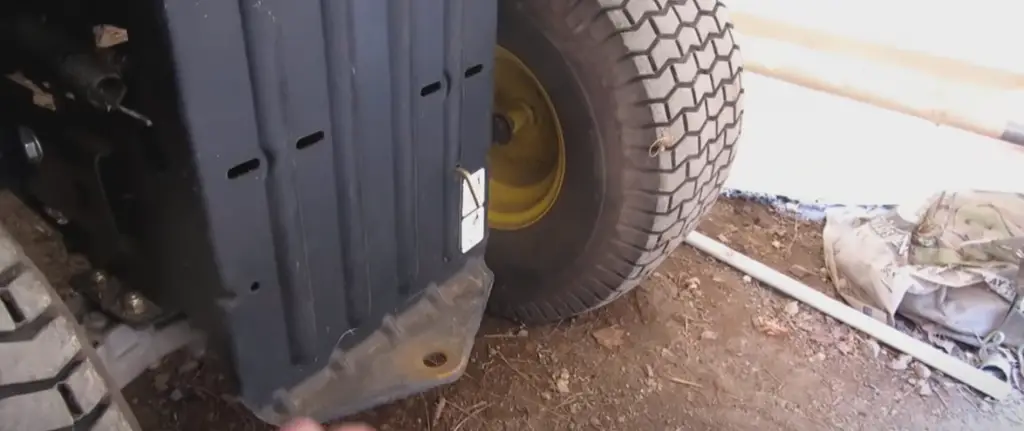
What is a Garden Tractor?
A garden tractor is a powerful piece of lawn care equipment. Unlike a normal riding mower, which is designed to cut grass and other vegetation, a garden tractor is designed for heavier tasks such as tilling soil, hauling materials, and providing power to accessories such as snowblowers and tillers. Garden tractors generally have more power than riding mowers, making them suitable for larger yards or areas with uneven terrain. Some models are even capable of pulling small trailers or carts loaded with tools or supplies.
Garden tractors are also available in various sizes to accommodate different needs. Smaller yard tractors are designed for smaller yards or gardens, while larger models can tackle larger tasks such as plowing snow or carrying supplies. Garden tractor attachments can also be purchased separately to expand the capabilities of a garden tractor, allowing it to perform multiple tasks such as tilling the soil and planting flowers or vegetables [2].
Lawn Vs Garden Tractor: What’s the Difference?
Engine power
When comparing a lawn tractor to a garden tractor, the main difference lies in the engine power. Lawn tractors are typically equipped with a single-cylinder engine ranging from 14 to 20 horsepower. Garden tractors, on the other hand, have more powerful engines ranging from 16 to 25 horsepower. This makes them better suited for heavier tasks like hauling large loads, mowing thick grass, and tilling the soil [3].
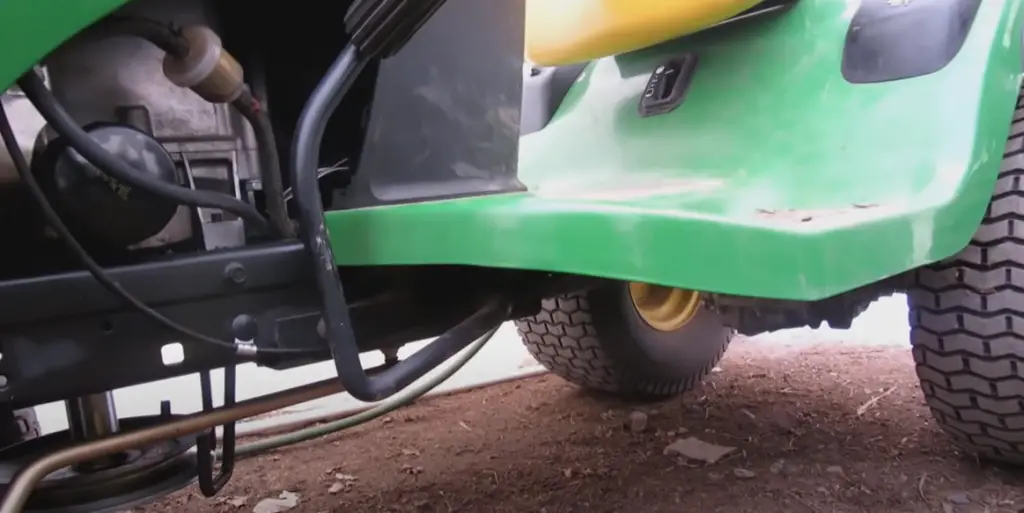
Weight capacity
The weight capacity of each type is also different. Lawn tractors usually have a weight limit of around 300 pounds while garden tractors can carry up to 1,000 pounds or more depending on the size and model. This means that heavier items such as fertilizer spreaders or seeders can be attached to a garden tractor but not a lawn tractor.
Cutting width
The cutting width of each type is also different. Lawn tractors generally have a cutting deck between 38 and 46 inches while garden tractors have larger cutting decks ranging from 42 to 54 inches. This makes the latter better suited for large lawns or acreages.
Attachments and additional accessories
Both lawn and garden tractors can be equipped with a variety of attachments and accessories including snowblowers, tillers, cultivators, aerators, dethatchers, and more. Garden tractors usually have more attachment options than lawn tractors as they are designed to handle heavier loads.
Fuel tank capacity
The size of the fuel tank is another difference between lawn and garden tractors. Lawn tractors usually have a fuel tank capacity of around 2 gallons while garden tractors may have up to 4 or 5 gallons. This makes them better suited for longer mowing jobs and tasks that require more power and endurance.
Durability
One final factor to consider is durability when comparing lawn and garden tractors. Lawn tractors are typically less durable than garden tractors due to their lighter construction and smaller engines. However, they are still suitable for most residential mowing jobs. Garden tractors are more durable and can handle tasks that would be too much for a lawn tractor such as tilling or hauling large loads.
The materials that are used for producing lawn tractors are sheet metal for the body and plastic for the seat, fuel tank, and hood. Garden tractors on the other hand are usually made from steel which is more durable than sheet metal and can withstand more wear and tear.
Power take-off type
The power take-off type is another distinguishing factor between lawn and garden tractors. Lawn tractors typically have a manual power take-off which means that it has to be operated by hand. Garden tractors often have an electric power take-off which allows the user to start and stop the engine from the seat using a switch or button [4].
Price
The last major difference between lawn and garden tractors is the price. Lawn tractors are generally more affordable than garden tractors as they are smaller and equipped with less powerful engines. Garden tractors may be more expensive but they come with larger engines, bigger decks, and a greater number of attachments which can make them worth the extra cost if you plan to use them for heavy-duty tasks. Garden tractors can cost anywhere from $2,000 to $4,000 or more depending on the features and accessories that it comes with. Lawn tractors can on average cost between $1,500 and $3,000 depending on the size and model.
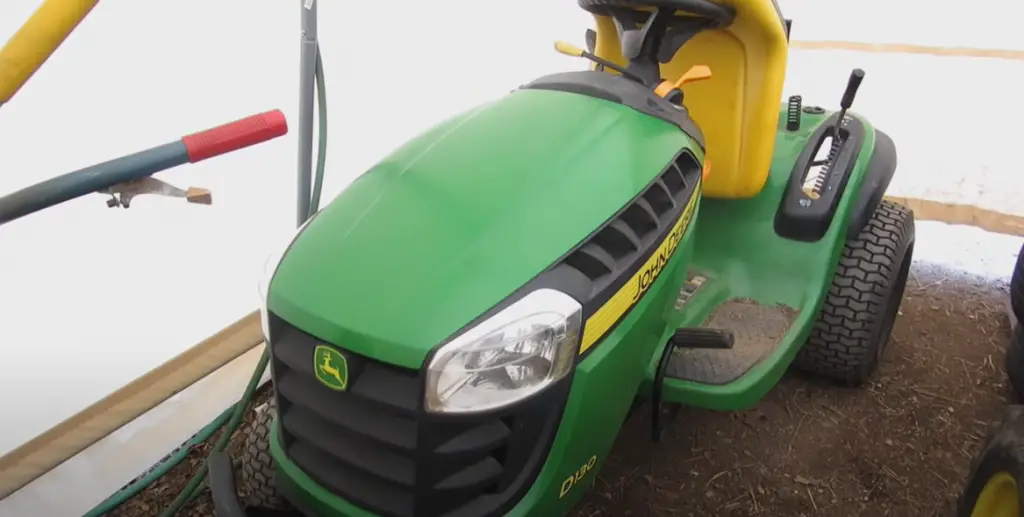
How to use tractors?
Using a tractor requires several steps and considerations.
- Determine the job you need to accomplish – This can range from plowing fields, mowing grass, digging trenches, spraying crops, or any other task that a tractor can be used for. Knowing what you intend to do with the tractor will help you determine what type of tractor is best suited for your needs.
- Select the appropriate size of tractor – Tractors come in various sizes ranging from compact garden tractors to large agricultural models. If you’re doing light work such as mowing lawns or tilling the soil, then a smaller model may be sufficient. But if you’re working on larger tasks such as hauling hay bales or plowing large fields, then a larger model may be necessary.
- Check safety requirements – Before using your tractor, make sure you understand and adhere to the safety requirements for its use. This includes ensuring that everyone in the area is wearing protective clothing, such as long-sleeved shirts, long pants, gloves, and hard-soled shoes. Additionally, all riders should be properly trained in how to operate the machine safely and correctly.
- Start up the engine – With the key inserted into the ignition switch, turn it counterclockwise to start up the engine. Make sure to check that all fluids are at their proper levels before starting up the engine
- Engage power take-off (PTO) – Make sure to engage the power take-off (PTO) before you begin working with your tractor. This will ensure that all of the necessary components are in working condition and can spin safely and efficiently during operation.
- Operate the machine – Now that you have checked safety requirements, started the engine, and engaged the PTO, you are ready to operate your tractor. Get familiar with all of the controls so that you can use them quickly and safely when needed.
- Stop the Machine – When you’re finished operating your tractor, make sure to disengage the PTO, turn off the engine, and double-check all safety procedures before leaving it unattended.

How to maintain tractors?
Maintaining a tractor is essential for keeping it in good running condition. Here are some tips to help you maintain your tractor:
- Check the fluids regularly: Regularly check and change the oil, coolant, brake fluid, power steering fluid, and transmission fluid as recommended by your manufacturer. This will help keep your engine running smoothly and extend its life.
- Change air filters regularly: Air filters should be changed every few months or when they become clogged with dirt or debris. Clogged air filters can cause serious engine damage if not checked regularly.
- Check tire pressure: Low tire pressures can lead to poor performance, decreased fuel economy, and increased wear-and-tear on the tires. Make sure to check the tire pressure on your tractor regularly and adjust it as needed.
- Clean the engine: Dirt and debris can build up in the engine over time, leading to decreased performance or even damage. Cleaning your engine regularly will help keep it running smoothly and improve its lifespan.
- Check belts and hoses: Belts and hoses are essential components of your tractor’s system that should be inspected regularly for cracks, fraying, or other signs of wear and tear. Replace any worn parts immediately to ensure optimal performance from your tractor.
- Lubricate moving parts: Any moving parts on your tractor, such as levers or pulleys, should be lubricated regularly to keep them running smoothly. This will reduce friction and help prevent any unnecessary wear and tear on the parts.
- Check the battery: Make sure the battery terminals are clean and free of corrosion, and that all connections are secure. If your battery is not holding a charge, it might need to be replaced or serviced by a professional.
By following these simple tips, you can make sure your tractor stays in good condition and runs reliably for many years to come. Taking care of your tractor now will save you time and money in the long run [5]!
FAQ
Is a garden tractor a lawn mower?
No, a garden tractor is not the same as a lawn mower. A garden tractor is larger and more powerful than a typical lawn mower. It is designed with heavier-duty components, such as larger tires and stronger frames, to handle heavier workloads that regular lawnmowers cannot accommodate.
Garden tractors typically have front-end loaders or other attachments for plowing snow, tilling the soil, and other large landscaping tasks. They are ideal for large yards or acreages. On the other hand, a conventional lawn mower is best used on smaller yards and can easily maneuver around tight spaces or corners in the yard. Additionally, it requires less maintenance due to its simpler design compared to a garden tractor.
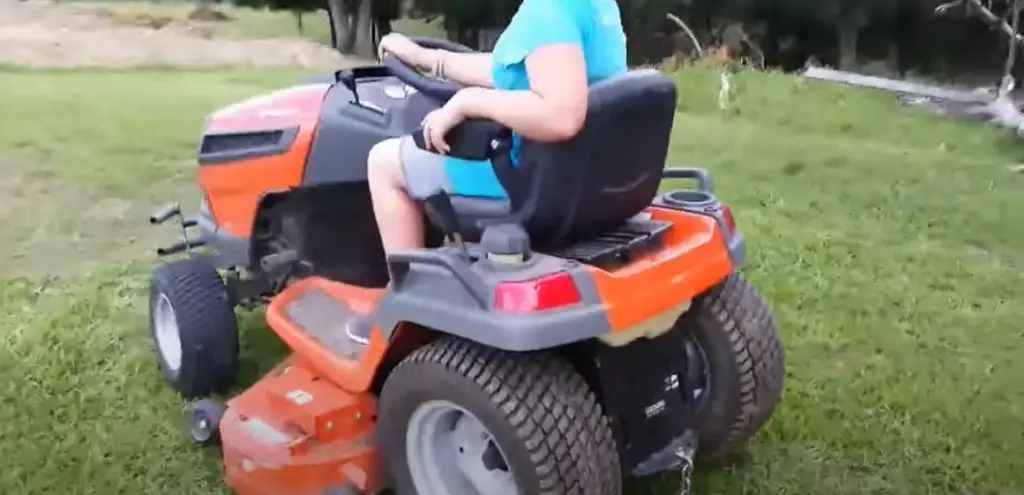
What is the difference between a ride on a mower and a lawn tractor?
A ride-on mower is smaller and more lightweight than a lawn tractor. It typically has two wheels and is designed for cutting grass in small yards, up to an acre or so. Its engine is not as powerful as that of a lawn tractor and it cannot accommodate heavy-duty attachments such as snow blowers or tillers. A lawn tractor also has two wheels but is much larger and heavier than a ride-on mower, with an engine size ranging from 20 to 25 horsepower. It can handle large yards, up to several acres, and attachments such as plows, snow blowers, grader blades, carts, and more. Additionally, its frame and tires are designed to be more durable than those of a riding mower which makes it more suitable for use in harsher conditions.
What is the best way to clean a lawn mower?
The best way to clean a lawn mower is to first remove all debris from the cutting deck, such as clippings and twigs. After that, scrape off any caked-on grass and dirt with a putty knife or similar tool. You can then use a hose to wash away any remaining grime and dirt, taking care not to get water into electrical components. Once you’re done cleaning the deck, spray WD-40 onto the blade shafts and pivot points of moving parts to lubricate them. Finally, inspect the spark plug and replace it if needed. Be sure to refer to your owner’s manual for detailed instructions on how to clean and maintain your lawn mower.
What is the difference between an electric lawn mower and a gas-powered one?
An electric lawn mower runs on electricity, while a gas-powered one runs on gasoline or diesel fuel. Electric mowers tend to be quieter and more environmentally friendly than their gas counterparts since they don’t require exhaust emissions or fossil fuels. They are also easier to start up since you just plug them in instead of having to prime the engine like with a gasoline mower. However, electric mowers usually have shorter run times compared to gas models, making them less suitable for larger yards. Gasoline mowers are generally more powerful and can handle larger areas without the need for frequent recharging. They are also usually cheaper than electric models.
Useful Video: Lawn Tractor vs Garden Tractor
Conclusion
Garden tractors and lawn tractors are both options when it comes to yard work. Garden tractors are more powerful and provide more versatility, making them ideal for larger yards with tougher terrain. Lawn tractors are better suited to smaller yards or those with flat terrain. Ultimately, the choice between a garden tractor and a lawn tractor will depend on the size of your yard and the type of work you plan on doing. Both types have their advantages, so make sure to research each option thoroughly before making a purchase. With the right machine, maintaining your outdoor space can be easier than ever!
References:
- https://www.thespruce.com/difference-between-riding-mowers-and-lawn-tractors-2130871
- https://www.muttonpower.com/content/277/lawn-tractors-vs-garden-tractors-buyers-guide
- https://aroundthelawn.wordpress.com/2015/04/06/whats-the-difference-between-a-lawn-tractor-and-a-garden-tractor/
- https://www.howdoesyourgardenmow.com/lawn-tractor-vs-garden-tractor/
- https://www.myoleo-mac.com/int/green-ideas/how-clean-your-garden-tractor/





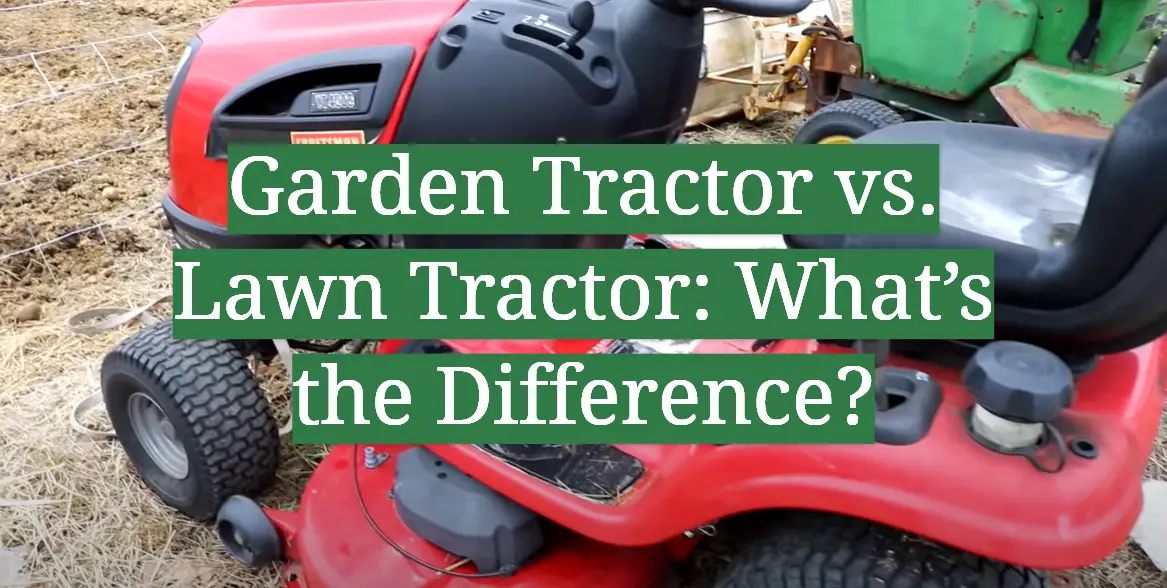




Leave a Reply
View Comments